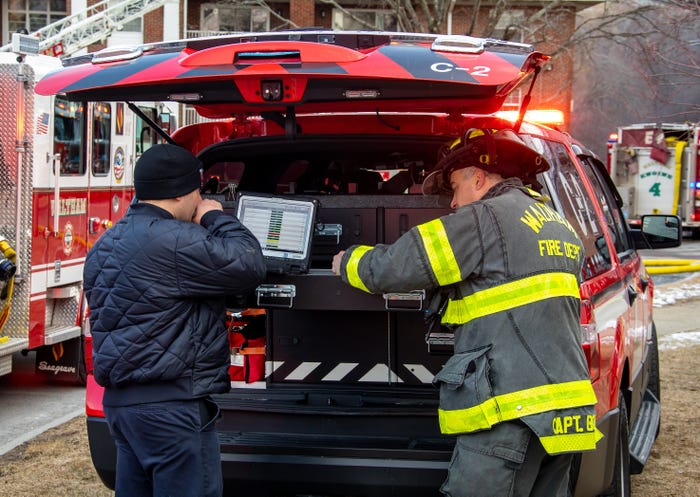Cisco, Positron launch new platformCisco, Positron launch new platform
Cisco and IPC-Positron today announced a new platform that integrates Cisco’s unified communications system and IPC-Positron’s VIPER offering to provide an IP-based solution for a new generation of emergency-response communications.
August 4, 2008
KANSAS CITY—Cisco and IPC-Positron today announced a new platform that integrates Cisco’s unified communications system and IPC-Positron’s VIPER offering to provide an IP-based solution for a new generation of emergency-response communications.
Dubbed the Emergency Communication and Collaboration Platform, the system is designed to meet the needs of a changing communications environment that is migrating from the voice-only model used in public-safety answering points (PSAPs) today to one that allows voice, video, text and data information to be leveraged in what Cisco and IPC-Positron are calling Emergency Communications and Collaboration Centers, or EC3s.
“We see the industry migrating from an answering-point model to a collaboration-center model,” said Morgan Wright, Cisco’s global industry solutions manager for public safety and homeland security.
With this in mind, the Cisco/IPC-Positron solution is expected to be used in emergency operations centers and fusion centers, as well as PSAPs.
While the initial focus of the platform is citizen-to-authority communications via any form of IP-based communications, the platform also is designed to handle authority-to-authority communications and, eventually, authority-to-citizen communications such as emergency notifications, Wright said.
Many in the industry have said that moving to such an IP-based model would be cost prohibitive on a large-scale basis, unless there is considerable consolidation among the nation’s 6000-plus PSAPs. But Wright said the new Cisco/IPC-Positron platform would not require any physical consolidations, although it would allow virtual consolidations by linking PSAPs.
“We’re not telling agencies, ‘You have to consolidate centers,’” Wright said. “What we’re trying to do is allow them to share information and share resources.”
In addition to allowing a group of emergency offices to be a “super PSAP” and leverage the resources of each, the new platform would let PSAPs be more reliable by allowing personnel to operate in different locations when the traditional facility is unavailable, such as was the case in the aftermath of Hurricane Katrina.
“If I need to evacuate, I can do that without being physically tied to one location,” said Paul Guest, director of marketing for IPC-Positron.
By using the Positron VIPER (Voice over IP for Emergency Response) system and Cisco’s unified communications solution effectively, emergency-response offices can leverage myriad information sources instead of having to be concerned about the information being a problem, Guest said.
“The key is to manage it [information] in a way to make sure you can use it without overpowering your ability to do your essential duties,” Guest said. “We have to be careful not to overwhelm the call-taker with technology for technology sake.”



